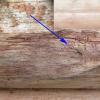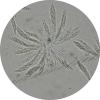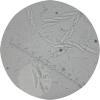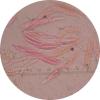
15-12-2025 15:48
 Danny Newman
Danny Newman
Melanospora cf. lagenaria on old, rotting, fallen

15-12-2025 15:54
 Johan Boonefaes
Johan Boonefaes
Unknown anamorph found on the ground in coastal sa

15-12-2025 21:11
 Hardware Tony
Hardware Tony
Small clavate hairs, negative croziers and IKI bb

15-12-2025 07:09
 Danny Newman
Danny Newman
indet. Rutstroemiaceae sp. on unk. fallen leavesMc

15-12-2025 07:05
 Danny Newman
Danny Newman
Pseudosclerococcum golindoi (det: Zotto)near Cosb

15-12-2025 11:49
 Danny Newman
Danny Newman
ITS sequences from the following two collections B

15-12-2025 12:34
 Danny Newman
Danny Newman
indet. Rhytismataceae on oak leafnear Purchase Roa

09-12-2025 12:06
 Andgelo Mombert
Andgelo Mombert
Bonjour,Je recherche l'article concernant Hypobryo
Nectriaceae?
Piet BORMANS,
07-09-2010 12:01
 Est-ce que quelqu'un peut m'aider à déterminer cet asco, qui selon moi appartient au genre Nectriaceae.
Est-ce que quelqu'un peut m'aider à déterminer cet asco, qui selon moi appartient au genre Nectriaceae.Récolté samedi passé sur des tiges mortes de Typha latifolia.
Ascomata rond, couleur jaune-orange, poussant au-dessus du substrat, dimension du diamètre 0,20-0,23mm
Asci 70-85 x 9 - 12 µm.
Spores 17-24 x 4-5 µm, cloisonnées 3 fois.
Alain GARDIENNET,
07-09-2010 12:12
Re:Nectriaceae?
Bonjour Piet,
Un Hydropisphaera certainement, donc un Bionectriaceae (tester la non réaction à KOH).
Probablement Hydropisphaera erubescens. Les spores seraient-elles striées ?
Alain
Un Hydropisphaera certainement, donc un Bionectriaceae (tester la non réaction à KOH).
Probablement Hydropisphaera erubescens. Les spores seraient-elles striées ?
Alain
Alain GARDIENNET,
07-09-2010 12:17
Re:Nectriaceae?
Mais je m'interroge sur l'habitat, H. erubescens étant régulièrement observé sur feuille de houx.
Si un spécialiste pouvait prendre le relai...
Alain
Si un spécialiste pouvait prendre le relai...
Alain
Gary Samuels,
07-09-2010 14:26
Re:Nectriaceae?
Good Morning Piet!
I agree with Alain, your fungus is most likely Hydropisphaera erubescens. We've had it on a wide range of substrata, including Holly (Ilex) in France, and geographic locations (as far away as New Zealand). An interesting, and distinctive, feature of this species is the presence of orange globules in crush mounts in water.
Gary
I agree with Alain, your fungus is most likely Hydropisphaera erubescens. We've had it on a wide range of substrata, including Holly (Ilex) in France, and geographic locations (as far away as New Zealand). An interesting, and distinctive, feature of this species is the presence of orange globules in crush mounts in water.
Gary
Piet BORMANS,
07-09-2010 21:40

Re:Nectriaceae?
Merci beaucoup Alain pour votre réponse trés rapide. La réaction au KOH est négative et les spores sont lissent.
Also many thanks to Gary for his confirmation and explanation.
Piet Bormans
Also many thanks to Gary for his confirmation and explanation.
Piet Bormans



